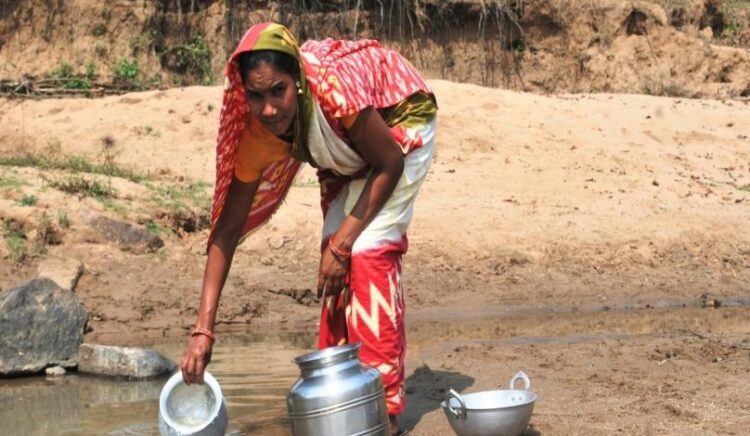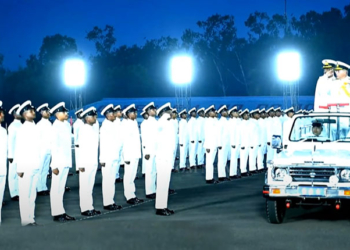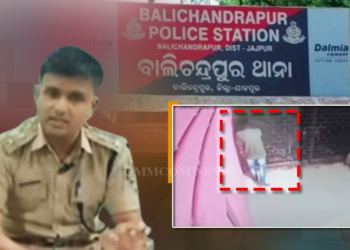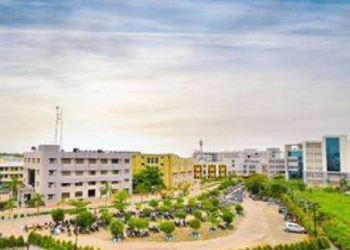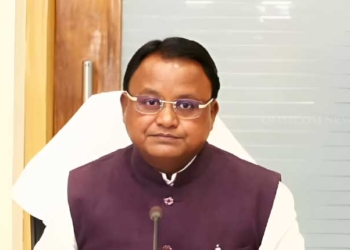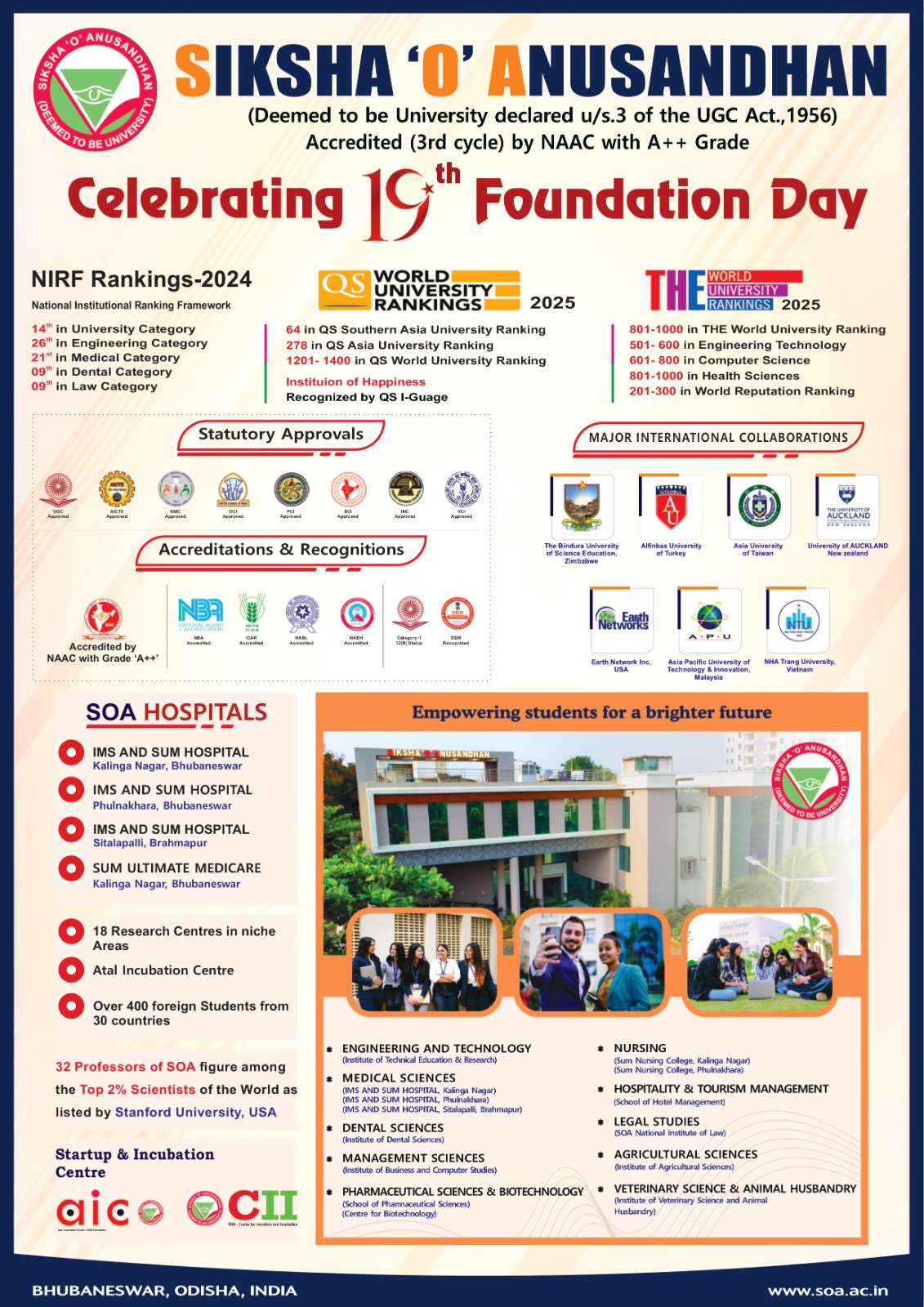Kandhamal/Rayagada: ‘Come to learn, go to serve’ reads the front wall of Bikapanga Upper Primary School in Tumudibandha block of Kandhamal district. Only 32 children study here from Class 1 to 8, yet those few are forced to ‘serve’ themselves as facilities are hard to come by.
The school does not have access to safe drinking water, and the boys and girls have to fetch water from the nearest canal if they want to use the toilet. “We have not seen any improvement in facilities, though the school was established in 1977. Even a tube well is not present,” lamented Arjuna Majhi, the parent of a student.
Water scarcity is a common thread running through the tribal villages of Kandhamal. To alleviate suffering, the Odisha government had promised tap water connections under the centrally sponsored Jal Jeevan Mission (JJM) to all schools and anganwadi centres by 2022. However, that promise is yet to be fulfilled.
Manoj Kumar Samantaray, a Bhubaneswar-based researcher on water, sanitation and hygiene, was unsurprised by the slow pace of the JJM. “Providing safe drinking water to tribal villages through the JJM is a complex task. There are several challenges on the way, including geographical barriers, lack of infrastructure, limited awareness, cultural barriers and funding constraints. Only by understanding and addressing the specific challenges faced by each community can the scheme become successful,” he said.
When asked about the infrastructure gap, Kandhamal District Education Officer Pramod Kumar Sadangi told 101Reporters that all efforts were being made to ensure water supply to schools. “Wherever required, immediate action will be taken to repair and rebuild water infrastructure. Schools have been closed from April 21 onwards to ensure the safety and health of students as day temperatures have soared to 38-41 degree Celsius,” he said.
Meanwhile, Arjuna, who is also the president of Bikapanga school management committee, said the problem was not restricted to water availability. “Students from Class 1 to 8 are put up in the same place as only three classrooms are present in the school. Of them, two are in a dilapidated condition. Despite approaching the authorities several times, no action has been taken.”
A pailful of grievance
Sumitra Majhi (36) has been trekking 2.5 km to fetch water for so many summers now that it is difficult to keep a count. “Water is a privilege. We women have to walk long distances even for a pail of water,” said Sumitra, a resident of Sapari in Tumudibandha block.
The hilly and forested Sapari tribal hamlet is home to 165 people in 38 households, but it never had access to safe drinking water. The two tube wells in the vicinity are defunct. “Tube wells stopped working in 2019. Our repeated requests to fix them were simply ignored. The authorities should prioritise this matter as access to safe drinking water is a fundamental right,” said Swarnalata Mallick, the sarpanch of Kurtamgarh gram panchayat under which Sapari falls.
However, Kedendi Majhi, a ward member from Sapari, blamed the sarpanch. “There is no response to our requests to repair the defunct tube wells. What shall we do?” he asks. In response, Though Mallick said the problem would be addressed at the earliest, she did not provide any information about the progress of repair work.
“Every summer, we hope against hope that this struggle will not repeat. We have to struggle for every drop of water,” rued Digamandala Majhi of Gunsupa. The villagers, mostly from the Particularly Vulnerable Tribal Group of Kutia Kondh, are forced to walk up to a km to fetch water from a puddle.
“The villagers boil the contaminated water, but there is always a health risk,” said Dibakar Sabar, an activist from Jana Jagarana Mancha.
Fed up with the annual struggle, women and teenage girls in hundreds had gathered for a rally at Tumudibandha and Kotagarh block headquarters on March 22, seeking safe drinking water and better anganwadi facilities.
Meanwhile, Ajit Kumar Behera, Executive Engineer, Rural Water Supply and Sanitation, Kandhamal, told 101Reporters that sarpanches have been told to identify locations where hand pumps needed repair or new tube wells should be dug. “This will help us allocate resources effectively and efficiently as two mega water projects serving more than 100 villages each are on the anvil. We are currently finalising tenders for single-village projects and soon work will begin on them,” he informed.
Decoding data
A recent study by Atmashakti Trust and its allies on the status of safe drinking water in 9,856 villages in 15 districts of Odisha paints a scary picture. As many as 9,37,152 households and 32,960 tube wells were included in the survey, which found that four out of every 10 houses lacked access to safe drinking water. Four out of every 10 tube wells and almost half of the hand pumps surveyed were defunct. In terms of percentage, 40.55 per cent households had no safe drinking water access, whereas 40.93 per cent tube wells and 48.6 per cent hand pumps were defunct.
According to the government data, only 45 per cent of rural households in Odisha have piped water access. “The government claims water sufficiency, while villagers continue to struggle,” said Rayagada-based Debendra Suna, another activist from Jana Jagarana Manch.
In Baladia village of Rayagada, over 80 households make do with one tube well and solar hand pump. The tube well cannot lift water from the rocky soil, despite digging to a depth of 60 to 80 ft. “Animals drink water from the canal, but it is our only source of water. It is unfit for consumption, but we have no choice. During rains, we get sick from drinking this muddy water,” said Satya Praska (28), a ward member from Baladia.
Things are worse in Nunduruguda, where villagers depend on chuan (puddle-like surface water source) to meet their water needs. “This is the only water source at our disposal. When one chuan dries up, we dig another near a canal or riverbed. When all sources dry up in summer, we have to walk to the neighbouring villages,” says Jayanta Urlaka (32). They store water in huge clay pots in summers, but it will last only for 10 to 15 days.
“Gruelling summer will only accentuate the crisis in water-starved villages unless the government takes swift action,” warned Laxmidhar Singh, a member of the Indigenous Peoples Forum.
Helpline of no help
A dedicated helpline number 1916 is run as a part of the Buxi Jagabandhu Assured Water Supply to Habitations (BASUDHA) scheme, said Hadibandhu Behera, a former chief engineer with the RWSS. “Mobile vans to repair defunct water infrastructure are also present.”
However, people are largely unaware of it. “I am hearing about this helpline for the first time. If the government had informed us, we would have definitely made use of this facility,” said Digamandal Majhi, a resident of Deredi in Kandhamal. At the same time, Santanu Patra, who works with Jeevika Suraksha Mancha, reminded that there are several remote tribal villages without mobile network coverage.
The state government is primarily focusing on the BASUDHA scheme, and has constructed new water supply systems, repaired existing ones, and set up water treatment plants in different parts of the state.
Under the JJM, the government aims to provide tap water connections to every rural household by 2024. For this, the Panchayati Raj and Drinking Water Department have proposed a budget allocation of Rs 5,750 crore under the JJM, Rs 4,002 crore under the BASUDHA scheme, and Rs 1,000 crore under the Rural Infrastructure Development Fund for the upcoming financial year.
(IANS)




